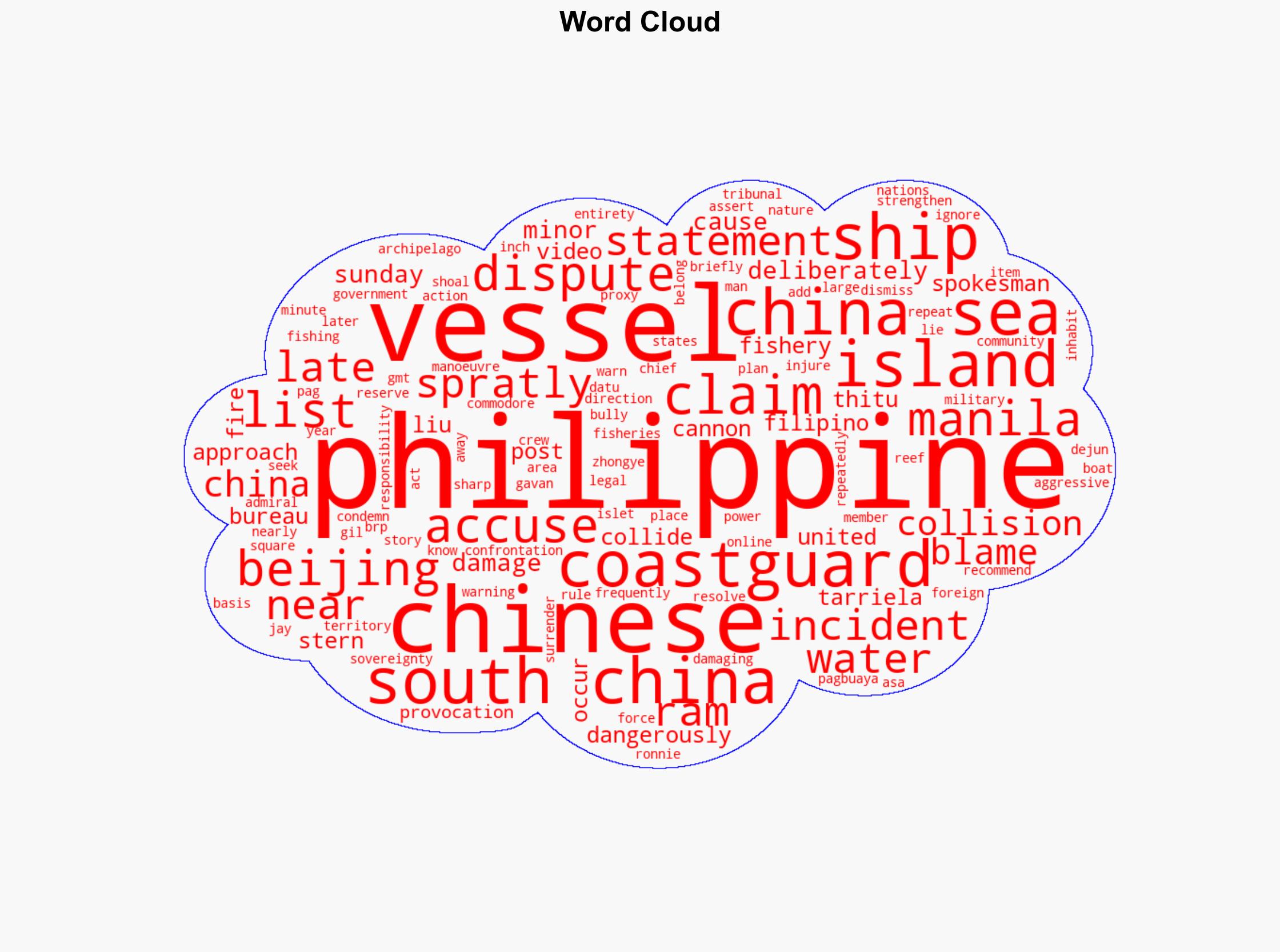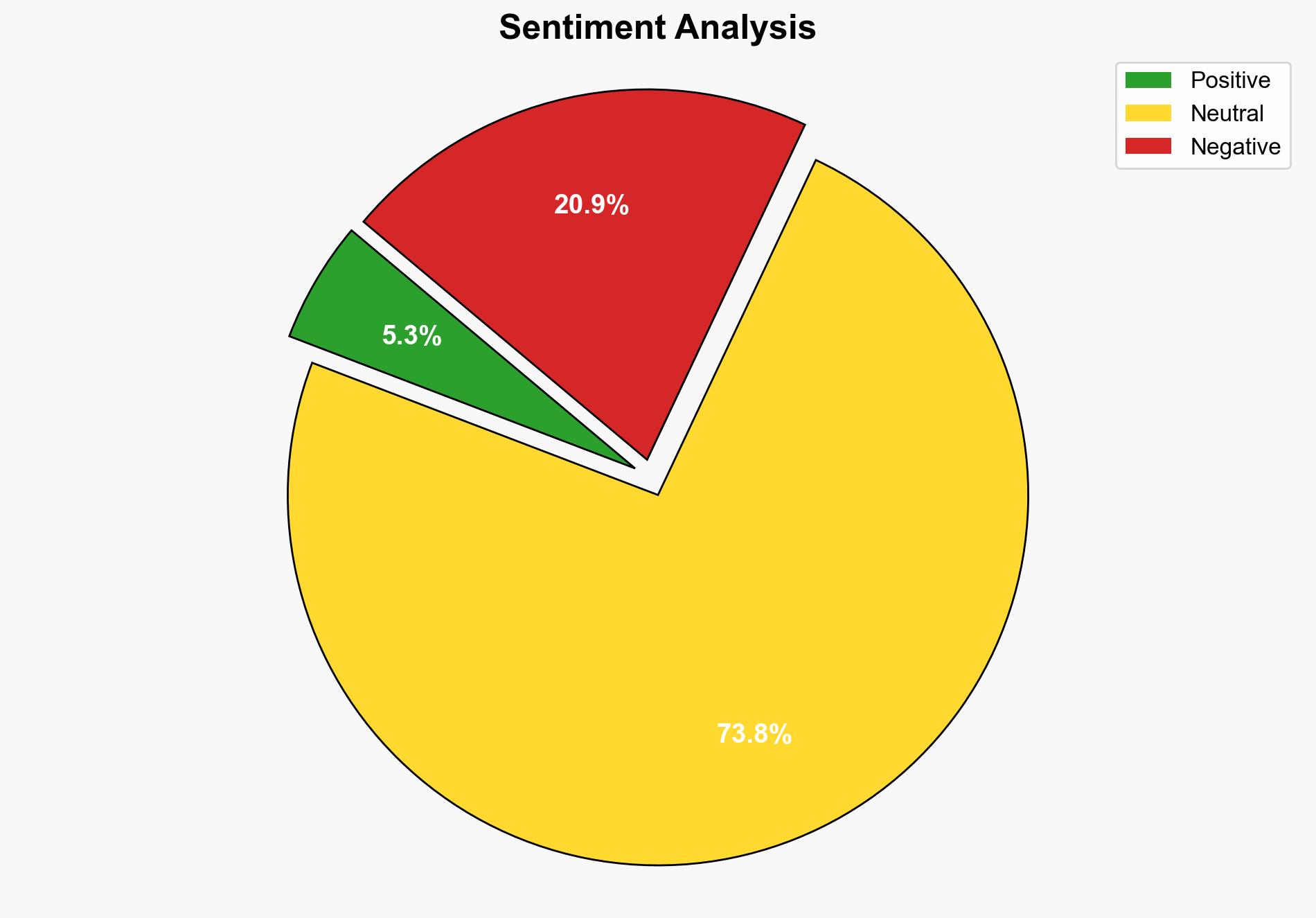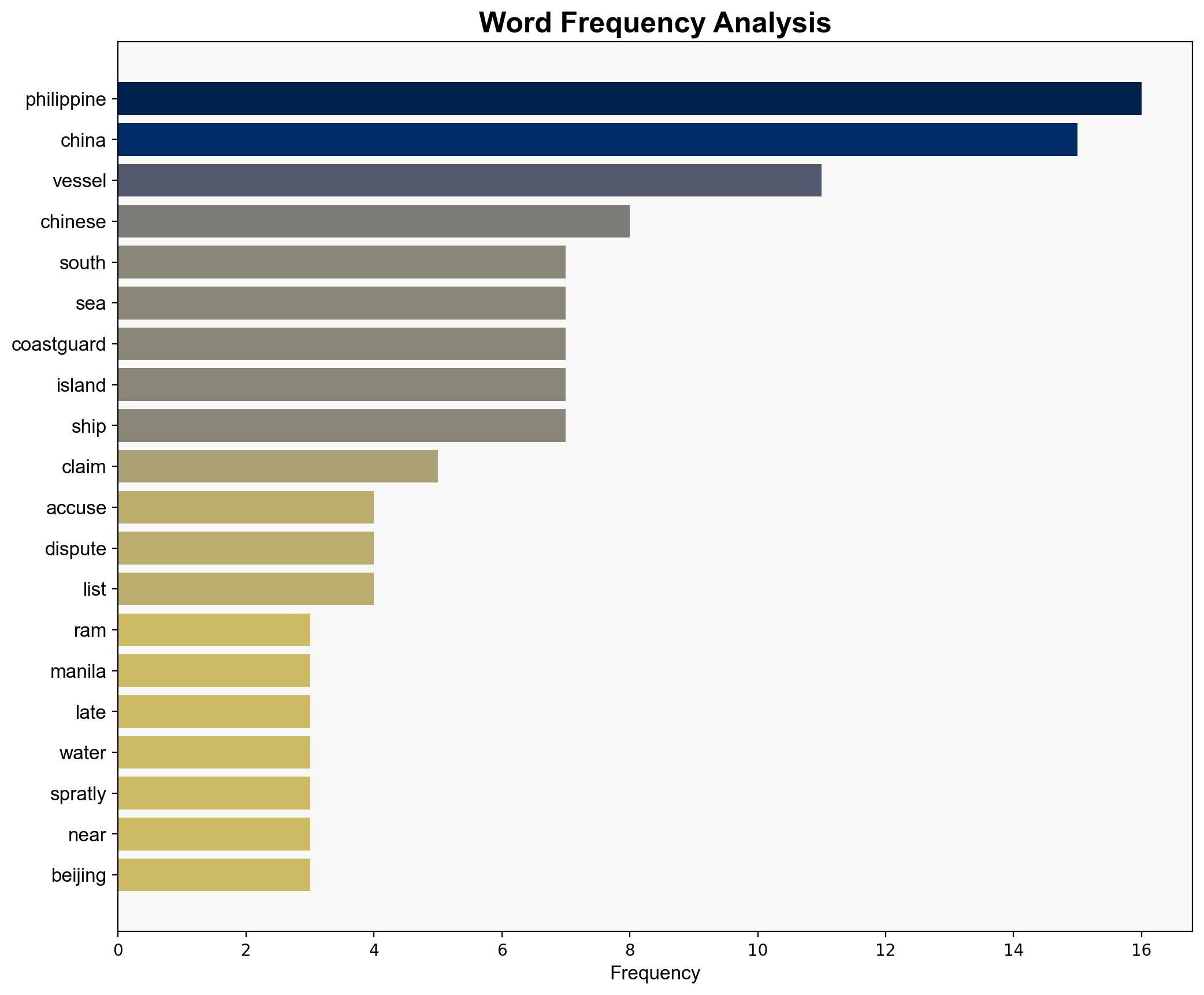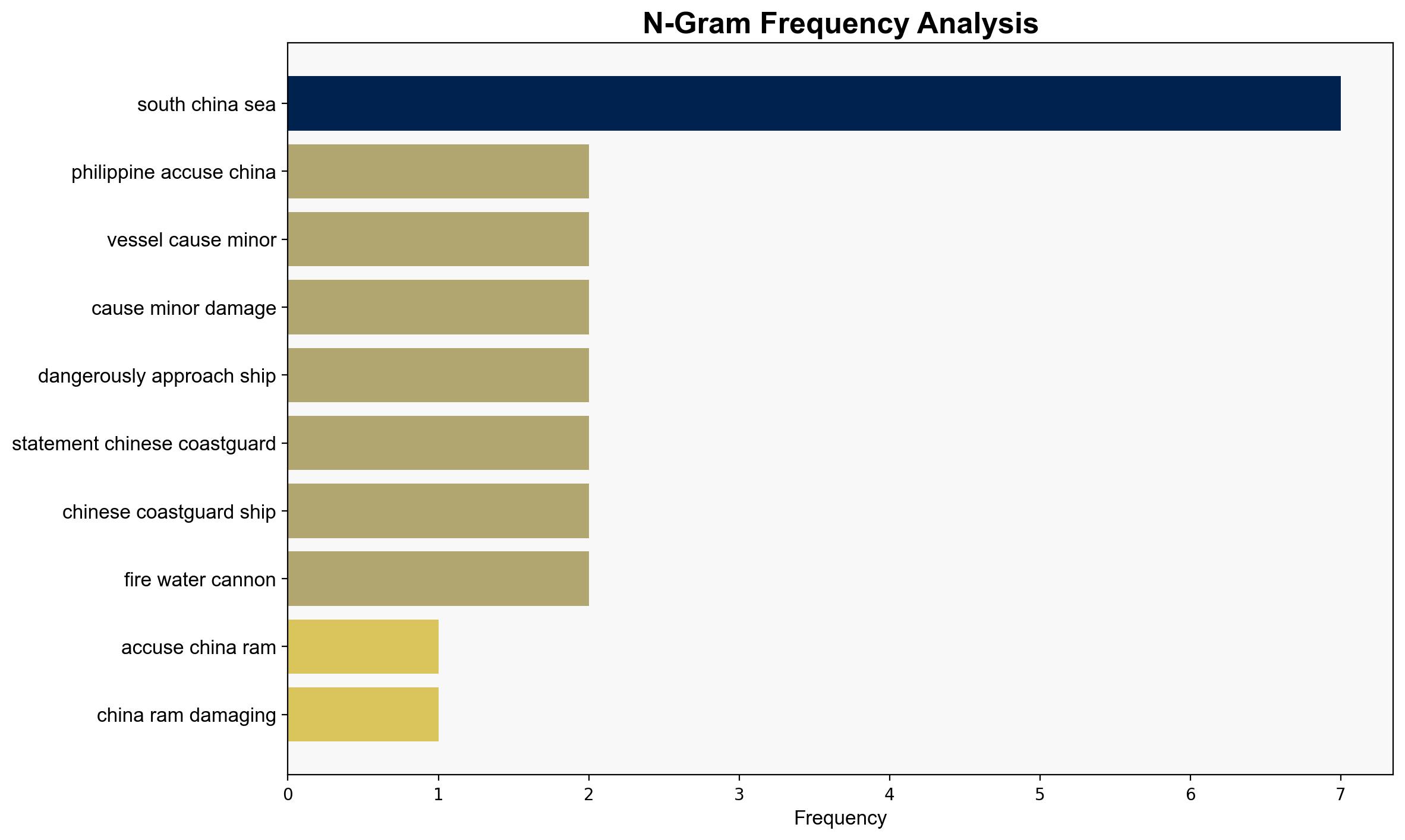Philippines accuses China of ramming damaging vessel in South China Sea – Al Jazeera English
Published on: 2025-10-12
Intelligence Report: Philippines accuses China of ramming damaging vessel in South China Sea – Al Jazeera English
1. BLUF (Bottom Line Up Front)
The incident involving the Philippines and China in the South China Sea is a significant escalation in regional tensions. The most supported hypothesis is that China is deliberately asserting its territorial claims through aggressive maneuvers. Confidence level: Moderate. Recommended action: Enhance diplomatic engagement and multilateral dialogues to de-escalate tensions and prevent further incidents.
2. Competing Hypotheses
Hypothesis 1: China deliberately rammed the Philippine vessel to assert dominance and territorial claims in the South China Sea.
Hypothesis 2: The collision was an unintended consequence of aggressive maneuvers by both parties in a highly contested area.
Using the Analysis of Competing Hypotheses (ACH) 2.0, Hypothesis 1 is better supported by the pattern of aggressive actions by China, such as the use of water cannons and historical precedents of similar incidents. Hypothesis 2 is less supported due to the consistent nature of Chinese provocations in the region.
3. Key Assumptions and Red Flags
Assumptions:
– China aims to assert its territorial claims through aggressive actions.
– The Philippines is acting independently and not as a proxy for other powers.
Red Flags:
– Potential bias in reporting from both sides.
– Lack of independent verification of the incident details.
– Possible underreporting of similar incidents.
4. Implications and Strategic Risks
The incident could escalate into a larger conflict involving regional and global powers, given the strategic importance of the South China Sea. Economic implications include potential disruptions to shipping lanes. Geopolitically, this could strain relations between China and ASEAN countries, as well as with the United States. The psychological impact on regional populations could lead to increased nationalism and militarization.
5. Recommendations and Outlook
- Engage in multilateral diplomatic efforts to establish clear communication channels and rules of engagement in disputed waters.
- Enhance regional security cooperation among ASEAN members to present a unified stance.
- Scenario Projections:
- Best Case: Diplomatic resolution and establishment of a code of conduct in the South China Sea.
- Worst Case: Military confrontation involving external powers.
- Most Likely: Continued low-level skirmishes with periodic diplomatic interventions.
6. Key Individuals and Entities
– Commodore Jay Tarriela
– Admiral Ronnie Gil Gavan
– Liu Dejun
7. Thematic Tags
national security threats, regional focus, maritime disputes, geopolitical tensions




